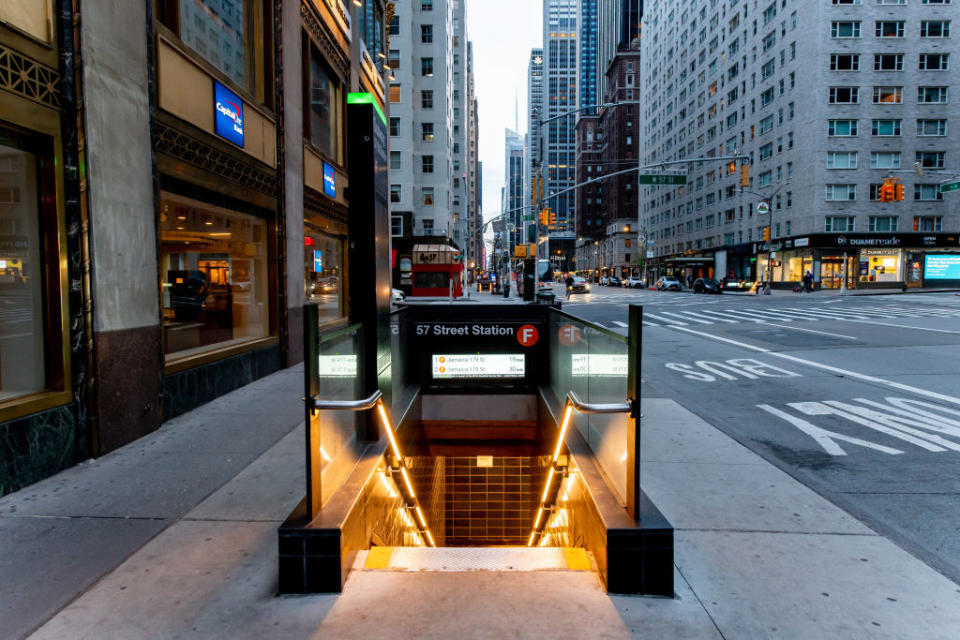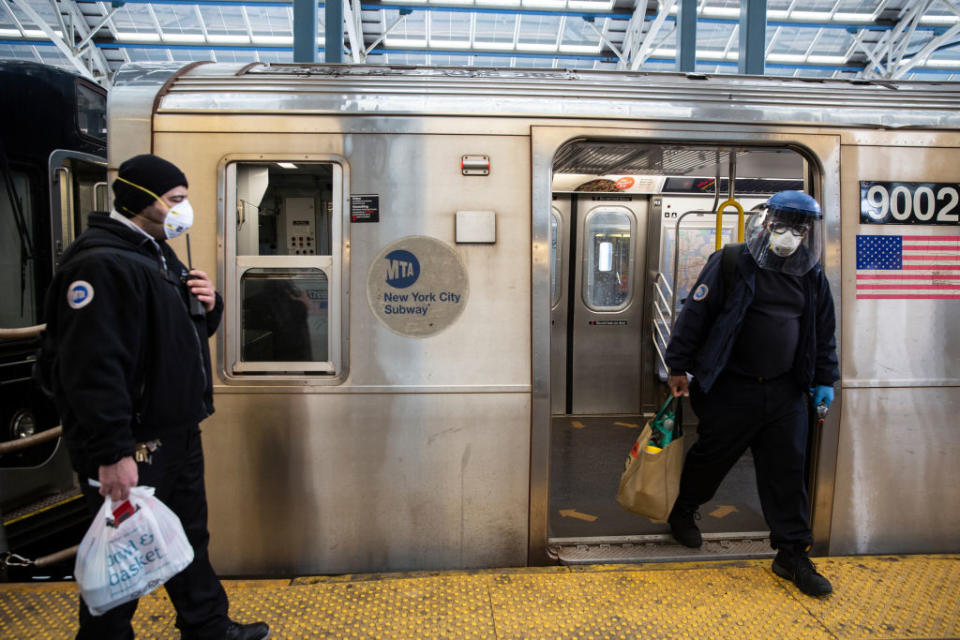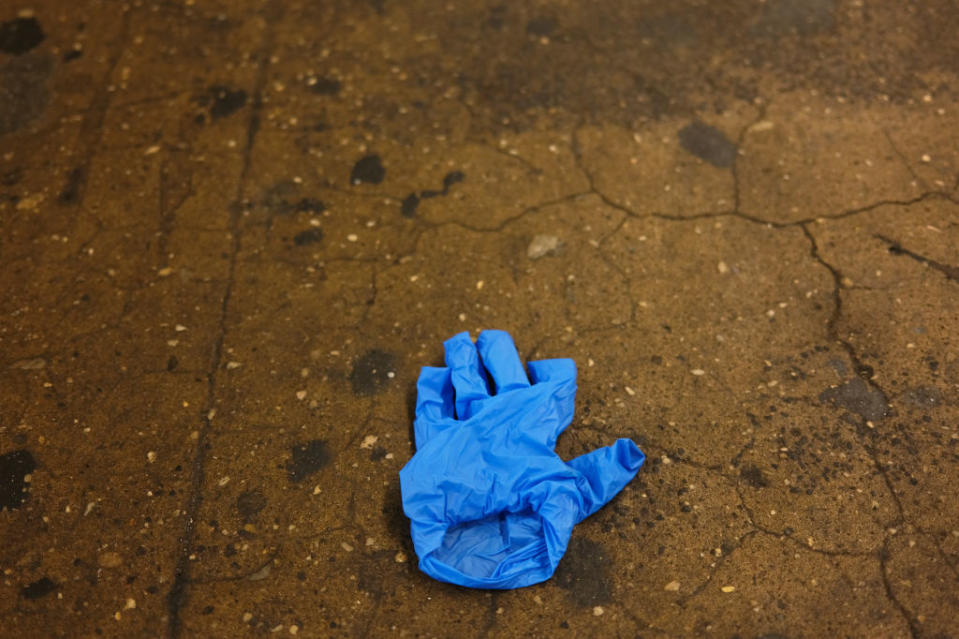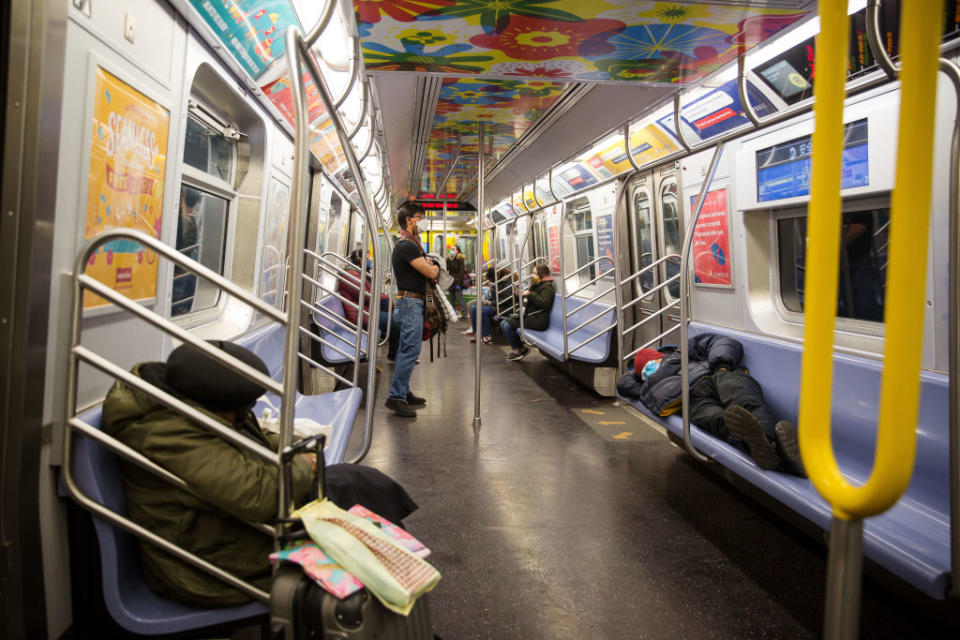'Sacrificial lambs': City's surprisingly deadly job during pandemic
Essential workers in cities hard hit by coronavirus are risking their lives going to work each day.
Healthcare workers around the world have been praised with nightly displays of gratitude, but other workers who carry on their public duties say the deadliness of their job right now has been under-appreciated.
In New York, one of the worst hit cities in the world, the Metropolitan Transport Authority has lost 79 employees to the coronavirus, the agency said this week.

Before the pandemic saw the iconic city effectively shut down, New York’s overstretched transport authority was serving more than 5 million commuters a day.
A vast majority of passengers have temporarily disappeared during the crisis but the trains and buses are still operating, ferrying essential workers including those in healthcare back and forth across the city.
With some 50,000 plus employees, the rate of coronavirus deaths among MTA workers is only slightly higher than the broader New York population, but as the victims are working age people the death rate has hit the sector hard.
Comparatively, 31 New York city police officers have died of COVID-19 to date.
“We are heartbroken,” said Sarah Feinberg, interim president of MTA New York City Transit. “The loss of life at MTA and other front line agencies is unimaginably tragic.”

Earlier, on MSNBC on Sunday night, local time, MTA Chairman Pat Foye mourned the loss of frontline transport workers.
“Every one of those people had a family and a story and a future and that is tragic and we mourn their loss,” he said.
However those driving the trains and buses have hit out at their bosses over the mounting crisis.
‘We were sacrificial lambs’
According to a report by The Guardian, a note from an MTA official to transit staff on March 4 told workers not to wear a mask.
“Since a mask is not part of the authorised uniform and not medically recommended at this time they may not be worn by uniformed MTA employees,” the note said.
That guidance was eventually changed when US health authorities evolved their public advice on wearing masks, but it reportedly left many transport workers with a bitter taste in their mouth.
Speaking to The Guardian, a number of disgruntled workers, including those who had tested positive for COVID-19 lambasted their employer for not doing enough to keep them safe during the early weeks of the outbreak.
“They have no problem playing Russian roulette with our lives,” said John Ferretti, a MTA subway operator.

“This job got me sick,” said train conductor Tramell Thompson. “They want to call us heroes now, but how can you call us heroes when you didn’t give your heroes the proper equipment to fight this?”
Workers say they weren’t officially sanctioned to wear protective gear during their shift until the end of March – days after colleagues had died of the disease.
“They waited until multiple workers died to start taking it seriously. We were sacrificial lambs,” another MTA subway operator, Canella Gomez, told The Guardian.
Healthcare worker filmed in 'powerful' stand-off with protesters
'A whole city underground': Video shows New York's virus problem
Trump urges residents to ‘liberate’ themselves from virus lockdown
New York’s subway system has a $13.5 billion problem
As the passengers disappeared, many of New York’s homeless population headed underground during the coronavirus lockdown.
A video taken by an MTA train worker last week showed a number of rough sleepers taking up residence in empty train cars, causing concern over the continued spread of the virus on the transport network.
However administrators are facing an even more pressing problem.
With 90 per cent of the usual commuters staying home, the MTA is facing a massive financial shortfall which has triggered memories of the 1970s when the city teetered on edge of bankruptcy and subway carts routinely broke down, The New York Times reported.
The transport agency is reportedly facing a US$8.5 billion ($13.5 billion) shortfall in necessary funding, even after scaling back services and receiving a US$3.8 billion government bailout.

“We don’t want to turn the clock back to the bad old days of the MTA, when state of good repair and system expansion was gutted to balance operating budgets,” Chairman Pat Foye said.
While coronavirus hospitalisation continues to trend down in New York and officials urge some people back into society, the city is far from out of the woods.
As of Wednesday morning, AEST, there has been more than 250,000 people test positive for coronavirus in the state, according to the Health Department, and 14,887 COVID-19 deaths in New York city.
Do you have a story tip? Email: newsroomau@yahoonews.com.
You can also follow us on Facebook, Instagram and Twitter and download the Yahoo News app from the App Store or Google Play.





